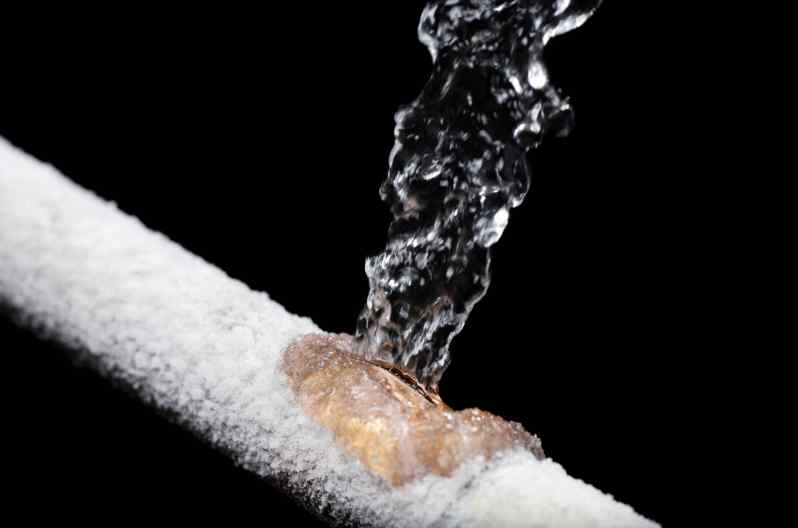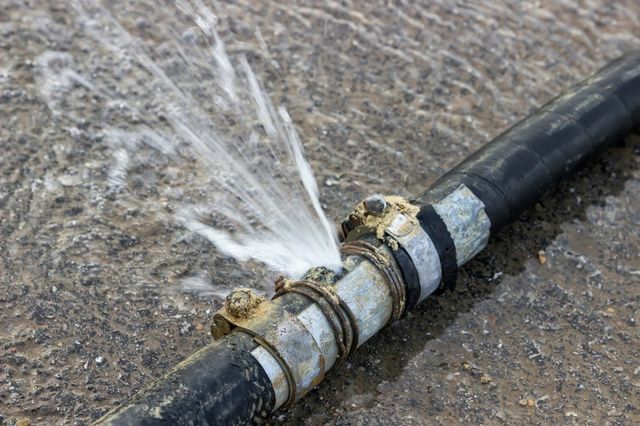How do you feel when it comes to What Do I Do If I Have A Burst Pipe In My Home??

You have to understand how to turn off your major water line if you experience a ruptured pipe. Don't await a plumbing emergency before discovering how to get this done. Besides, aside from emergency leaks, you will need to turn off your main water valve for plumbing repair services or if you leave for a long trip. Figure out more regarding it in this miniature guide.
Must This Constantly Be Shut down?
Apart from emergencies, repair work, or long getaways, you may not require to turn off the main shutoff. As an example, so one fixture has concerns, you can shut off the branch shutoff because spot. This way, you can still make use of water in various other parts of the house. For best results, call a dependable plumber for emergency situations.
Why Must You Close the Main Line Off?
Acquainting yourself with just how your mainline turns on and off can save you during an emergency. As an example, when a pipe unexpectedly bursts in your residence, you'll be besieged with panic. Therefore, you can conveniently shut the valve off and also prevent much more damages if you understand what to do. Additionally, shutting this off ensures you don't need to take care of an unexpected flooding in your home.
In addition to that, shutting and opening up the valves once in a while ensures they don't obtain stuck. It is also the best time for you to evaluate for corrosion or various other busted links. Additionally, make it an indicate enlighten various other family members on what to do. This makes normal upkeep and also dealing with emergency situations so much simpler. You can possibly save on your own thousands of dollars out of commission.
Where is This Primary Valve Located?
The main water line supply can differ, so you might need to find time to determine where it is. However, when your residence is obtaining soaked as a result of a ruptured pipeline, you do not have the deluxe of time throughout an emergency. Therefore, you should plan for this plumbing predicament by finding out where the valve is located.
This shutoff valve could appear like a sphere valve (with a lever-type manage) or a gate shutoff (with a circle faucet). Positioning depends upon the age of your house and also the environment in your area. Examine the following common places:
Water Pipe Burst: 6 Steps You Need to Take Now
Why Did My Water Pipe Burst?
There are many reasons why a water pipe fails. While each situation is different, there are a few common causes of water pipe bursts, from weather to external damage.
Let’s look at five culprits, and the steps to take to prevent issues.
Freezing Temperatures
If you live in a climate where temperatures drop below freezing, be aware of the heightened potential for pipe problems.
When temperatures drop, the water inside your pipes may turn to ice. As more water trickles in, the frozen area grows… and the frozen water expands.
Over time, the pressure may be too much. Bonds in the pipe weaken and cracks form. When the ice finally melts, the temperature change can shatter both the ice and the surrounding pipe. If the pressure is strong enough, the pipe bursts.
To keep pipes from freezing and bursting, shut off the water to outdoor spigots and drain the remaining water from pipes. Insulate indoor pipes to keep them warm.
If pipes are on an outer wall, open cabinets if possible. When it’s freezing outside, leave at least one faucet slowly dripping to keep the water moving inside the pipes at all times.
If the temperature gets well below freezing and even into the negatives, you may want to leave a steady stream of water flowing. A water bill that’s a little bit higher will likely be much cheaper than flooding repairs.
Rust and Corrosion
Corrosion is another common cause of burst pipes. Rust and corrosion build up inside pipes, especially in older homes and in areas where water has a high iron content.
Over time, the corrosion weakens pipes, leading to an increased chance of a burst. Steel pipes are especially susceptible to rust.
To prevent rust and corrosion, replace steel pipes with plastic or copper. These types of pipes tend to resist corrosion longer.
Tree Roots
When trees around your home grow taller, their roots grow downward and outward, too. Sometimes, roots come in contact with water pipes.
In a battle between tree roots and pipes, the roots usually win. As roots continue to grow and press against the pipes, the pipes crack, leading to leaks.
To keep roots from encroaching, be sure to plant trees far from your water pipes. Choose slow-growing tree varieties that have small root balls.
If trees are already encroaching, you may try to add a physical or chemical barrier to prevent roots from accessing pipes.
Movement and Water Pressure
Sometimes, the soil around pipes shifts or moves, causing pipes to lose stability and crack. Movement may occur due to nearby construction, temperature fluctuations, or repairs made to other parts of the plumbing system.
High water pressure may also cause pipes to move. If the pressure reaches a PSI above 60, pipes may simply burst from the strain.
Construction is a major cause of pipe movement. Request that dirt from nearby construction isn’t dumped on top of your pipe system to prevent movement and increase pressure.
Clogs
You already know that clogs can back up your sink and shower drains. But did you know that they can lead to burst pipes, too? A clog can cause water pressure to build up behind it, especially if it’s deep within the system.
That’s why it’s important to be mindful of what gets poured down the drain, goes into the garbage disposal, and flushed down the toilet. Limiting drains to water and approved materials can help prevent deep clogs.
Signs of a Busted Water Pipe
How do you know if you have a burst water pipe? The most obvious sign is finding puddles of water in your home.
However, puddles can come from leaks, rather than bursts. Here’s how to tell the difference.
If a puddle gets bigger when you turn the water on, that indicates a burst pipe. Because bursts allow water to move through the walls, you may notice water puddling directly under the burst pipe, and also pooling in other places.
For instance, if the pipe leading to the bathroom sink bursts, you may see puddles under the sink and on the floor near the tub and toilet. In contrast, leaks tend to pool in just one place.
Another sign of a burst pipe? Water pressure issues. Burst pipes generally lead to low water pressure, as the cracked area affects how much water moves through the pipes.
Stains may appear on the walls and floors near a busted water pipe. If bursts are caused by rust, you may notice that water has a strange, metallic odor and reddish discoloration. The presence of mold or mildew may also indicate a burst water pipe.
First Steps to Take When a Water Pipe Bursts
Locate your main water valve and shut it down to prevent any more water from flowing into your walls and home. Your main shut-off may be in your basement, crawl space, or by your hot water heater. (If you think water has come in contact with electrical sockets, wiring, or a fuse box, turn your electricity off, too). Drain your faucets. Starting with the cold tap, drain the remaining water out of the pipes, then flush every toilet in the house a few times. Next, turn off your boiler or water heater and drain the hot tap. This will relieve water pressure. Call the plumber once the water is turned off and pressure is relieved. Getting professional help quickly is key. Try to find the burst pipe. If you can find the leak, place a bucket under it to catch the water. Look for bulges in the ceiling or other signs of water damage. Document the damage. You may need to make an insurance claim, so document thoroughly. Take close-up photos of damaged items and areas, and of the pipes themselves. Use rulers in pictures to show water levels. Take photos from different angles; the more documentation you have, the better. You may even want to take a video of the leak before you shut off the water main. Clean up the mess. If water sits too long, microbes will grow, leading to harmful mold and mildew. This can lead to long-term damage, so get your home dry as soon as possible. You may need to call in a professional drying company, as simply opening the windows and turning on fans may not be enough.

Hopefully you enjoyed reading our post on What Do I Do If I Have A Burst Pipe In My Home?. Thanks so much for finding the time to read through our piece. Don't hesitate to set aside a second to share this blog post if you enjoyed it. Many thanks for your time. Don't hesitate to come by our blog back soon.
Request plumbing analysis.
 Rider Strong Then & Now!
Rider Strong Then & Now! Anthony Michael Hall Then & Now!
Anthony Michael Hall Then & Now! Destiny’s Child Then & Now!
Destiny’s Child Then & Now! Earvin Johnson III Then & Now!
Earvin Johnson III Then & Now! Bernadette Peters Then & Now!
Bernadette Peters Then & Now!